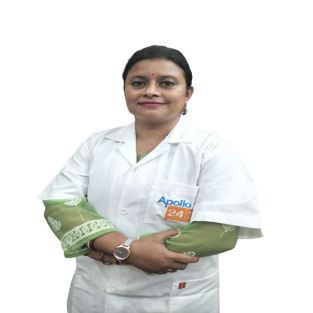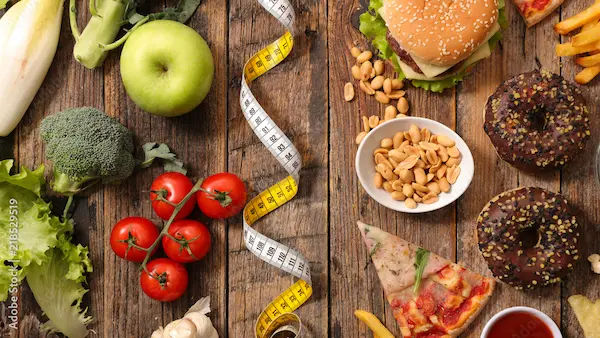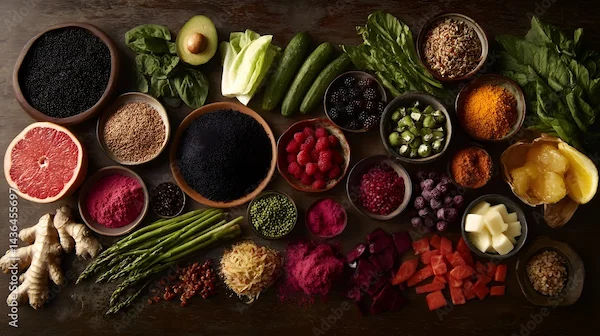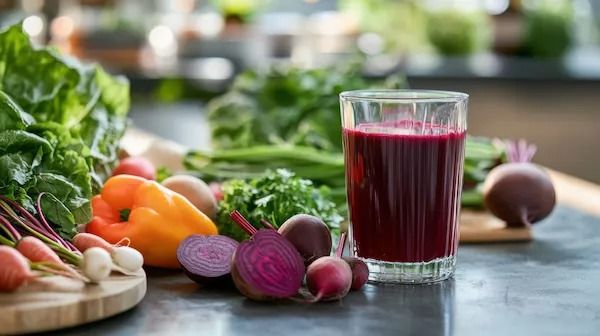Your Ultimate Guide to Home Food Safety: Preventing Illness in Your Kitchen
Discover essential home food safety tips to prevent foodborne illness. Learn how to clean, separate, cook, and chill safely, plus practical advice for leftovers, grocery delivery, and high-risk groups.

Written by Dr. Dhankecha Mayank Dineshbhai
Reviewed by Dr. Md Yusuf Shareef MBBS
Last updated on 26th Sep, 2025

Introduction
Every year, millions of people experience foodborne illness, often mistaken for a stomach bug. The culprit? Frequently, it is not a restaurant meal but something prepared right in our own kitchens. The good news is that most cases of food poisoning are entirely preventable with proper knowledge and practices.
This comprehensive guide is your go-to resource for home food safety, empowering you with evidence-based tips to protect yourself and your loved ones. We will move beyond the basics to provide a deep dive into the four core principles: Clean, Separate, Cook, and Chill, and explore advanced strategies for modern life, from handling grocery delivery to safely storing leftovers. Whether you are a seasoned chef or a kitchen novice, mastering these practices is the key to confidence and well-being every time you cook. Let us create a safer, healthier kitchen environment together.
The Four Pillars of Food Safety: Clean, Separate, Cook, Chill
These four principles, championed by food safety agencies worldwide, form an unbeatable defence against harmful bacteria and viruses. Think of them as the essential rules for preventing food poisoning at home.
Pillar 1: Clean – Your First Line of Defence
Bacteria can survive on hands, utensils, and countertops, easily transferring to food. A clean kitchen is your first and most crucial barrier.
1. The Right Way to Wash Your Hands
This seems simple, but most people do not do it effectively. Wet your hands with clean, running water, lather with soap, and scrub for at least 20 seconds—about the time it takes to sing “Happy Birthday” twice. Scrub the backs of your hands, between your fingers, and under your nails. Rinse and dry with a clean towel. Always wash hands before, during, and after handling food, especially after touching raw meat, poultry, seafood, or eggs.
2. Sanitising Countertops, Cutting Boards, and Utensils
After preparing each food item, wash cutting boards, dishes, utensils, and countertops with hot, soapy water. For extra protection, especially after handling raw meat, sanitise surfaces. You can use a diluted bleach solution (1 tablespoon of unscented bleach per gallon of water) or a commercial kitchen sanitiser. Rinse with clean water and air dry.
Consult Top Dieticians
Pillar 2: Separate – Stopping Cross-Contamination in Its Tracks
Cross-contamination is how bacteria spread from one food to another. This is most dangerous when raw meat, poultry, seafood, and their juices come into contact with ready-to-eat foods like fruits, vegetables, or cooked items.
1. Smart Grocery Bagging and Fridge Organisation
At the grocery store, keep raw meat, poultry, and seafood in separate plastic bags to prevent their juices from dripping onto other foods. In your refrigerator, store these raw items in sealed containers or plastic bags on the bottom shelf. This prevents juices from dripping onto foods below.
2. The Cutting Board Rule: One for Produce, One for Raw Meat
The simplest way to prevent cross-contamination is to use separate cutting boards. Designate one cutting board exclusively for raw meat, poultry, and seafood, and another for fresh produce and ready-to-eat foods. Colour-coded boards are an excellent visual reminder.
Pillar 3: Cook – Heat It to Beat It
Cooking food to the right internal temperature kills harmful bacteria. Colour and texture are unreliable indicators; the only way to be sure is to use a food thermometer.
1. Why Guesswork is Risky: The Non-Negotiable Food Thermometer
You cannot see, smell, or taste the bacteria that cause food poisoning. A food thermometer is the most important tool in your food safety arsenal. It takes the guesswork out of cooking and ensures your food is both safe and perfectly cooked (avoiding dryness from overcooking).
2. Safe Internal Temperature Chart for Common Foods
Insert the thermometer into the thickest part of the food, avoiding bone, fat, or gristle. Refer to this chart for key temperatures:
- Poultry (Chicken, Turkey): 165°F (74°C)
- Ground Meats (Beef, Pork): 160°F (71°C)
- Beef, Pork, Lamb (Steaks, Roasts): 145°F (63°C) with a 3-minute rest time
- Fish and Shellfish: 145°F (63°C) or until flesh is opaque
- Eggs: Cook until yolk and white are firm
- Leftovers and Casseroles: Reheat to 165°F (74°C)
Pillar 4: Chill – Slowing Down Bacterial Growth
Bacteria multiply rapidly in the danger zone between 40°F and 140°F. Chilling food properly slows down this growth.
1. The 2-Hour Rule: Refrigerating Perishables
Perishable foods should not be left in the danger zone for more than 2 hours. If the temperature is above 90°F (such as on a hot summer day), that window shrinks to just 1 hour. This includes cooked foods, leftovers, and groceries after you get home. Refrigerate or freeze them promptly.
2. Safe Thawing Methods: Never on the Counter
Thawing frozen food on the counter is dangerous, as the outer layers can enter the danger zone while the inside is still frozen. There are only three safe ways to thaw:
- In the Refrigerator: This is the best method. Plan ahead, as it can take 24 hours for every 5 pounds of weight.
- In Cold Water: Place the food in a leak-proof plastic bag and submerge it in cold water. Change the water every 30 minutes.
- In the Microwave: Use the defrost setting and cook the food immediately after thawing.
Beyond the Basics: Advanced Home Food Safety Tips
Food safety does not stop at the four pillars. Here are further practices to strengthen your protection against foodborne illness.
1. Handling Leftovers Safely
Divide large amounts of leftovers into shallow containers for rapid cooling. Consume them within 3–4 days. When reheating, ensure they reach an internal temperature of 165°F. Soups and sauces should be brought to a rolling boil.
2. The Lowdown on Grocery Delivery and Farmers Market Finds
For grocery delivery, be home to receive perishable items and refrigerate them immediately. For produce from farmers’ markets, wash it thoroughly under running water, even if you plan to peel it, to prevent transferring dirt and bacteria from the surface to the edible part. If you experience persistent gastrointestinal issues after eating certain foods, it is a good idea to consult a doctor online with Apollo24|7 to rule out a foodborne illness or intolerance.
3. Special Considerations for High-Risk Groups
Pregnant women, young children, the elderly, and individuals with compromised immune systems are more vulnerable to severe foodborne illness. They should avoid high-risk foods such as raw or undercooked seafood (sushi), unpasteurised milk and cheeses, and raw cookie dough.
Conclusion
Mastering home food safety is an ongoing practice that quickly becomes second nature. By faithfully applying the principles of Clean, Separate, Cook, and Chill, you transform your kitchen from a potential hazard zone into a safe haven for creating delicious and nourishing meals. This guide has equipped you with the knowledge to confidently handle groceries, prepare ingredients, and store leftovers, significantly reducing your risk of foodborne illness. Remember, the small steps, like washing your hands properly and using a thermometer, make the biggest difference. Share these tips with your family to make everyone a part of your kitchen safety team. Your health is worth the effort. If you ever experience severe or prolonged symptoms such as vomiting, diarrhoea, or fever after eating, it is crucial to seek medical attention. You can easily book a physical visit to a doctor with Apollo24|7 for a professional evaluation.
Consult Top Dieticians
Consult Top Dieticians

Ms. Soma Saha
clinical nutrition
17 Years • B.Sc. - Home Science (Food & Nutrition), M.Sc. - Home Science (Food & Nutrition)
Kolkata
Dr Utsa Basu Clinic, Kolkata
(50+ Patients)

Ms. Sreeparna Dey Dhara Deb
Dietician
10 Years • DNHE
Bansdroni
Siddhita Healthcare., Bansdroni

Ms. Samapti Maity
Dietician
16 Years • MSc. (Clinical Nutrition & Dietitics), NDEP, Course in Maternal Infant Young Child Nutrition.Diploma in Sports Nutrition, Diploma in Diabetic educator, FODMAP Specialist
Kolkata
BIENETRE CLINIC, Kolkata

Ms. Malabika Datta
Dietician
17 Years • Msc. in Dietetics & Food Service Management
Kolkata
Dr Utsa Basu Clinic, Kolkata
(25+ Patients)

Dr Haripriya S G
Family Physician
22 Years • MBBS, PGD (Family Medicine)
Bengaluru
Apollo Clinic, JP nagar, Bengaluru
Consult Top Dieticians

Ms. Soma Saha
clinical nutrition
17 Years • B.Sc. - Home Science (Food & Nutrition), M.Sc. - Home Science (Food & Nutrition)
Kolkata
Dr Utsa Basu Clinic, Kolkata
(50+ Patients)

Ms. Sreeparna Dey Dhara Deb
Dietician
10 Years • DNHE
Bansdroni
Siddhita Healthcare., Bansdroni

Ms. Samapti Maity
Dietician
16 Years • MSc. (Clinical Nutrition & Dietitics), NDEP, Course in Maternal Infant Young Child Nutrition.Diploma in Sports Nutrition, Diploma in Diabetic educator, FODMAP Specialist
Kolkata
BIENETRE CLINIC, Kolkata

Ms. Malabika Datta
Dietician
17 Years • Msc. in Dietetics & Food Service Management
Kolkata
Dr Utsa Basu Clinic, Kolkata
(25+ Patients)

Dr Haripriya S G
Family Physician
22 Years • MBBS, PGD (Family Medicine)
Bengaluru
Apollo Clinic, JP nagar, Bengaluru
More articles from Nutritional
Frequently Asked Questions
Is it safe to eat food left out overnight?
No. Food left out at room temperature for more than two hours (or one hour if the temperature is above 90°F) enters the danger zone where bacteria can multiply to dangerous levels. It is safest to discard it.
What is the proper way to wash fruits and vegetables?
Rinse them under cool, running water. There is no need to use soap or commercial produce washes. For firm produce like melons or cucumbers, scrub with a clean produce brush. Dry with a clean cloth or paper towel.
How can I tell if chicken is cooked without a thermometer?
While colour (no pink) and clear juices are indicators, they are not foolproof. The only way to guarantee chicken is safe to eat is to use a food thermometer and verify it has reached an internal temperature of 165°F.
What is the correct refrigerator temperature?
Your refrigerator should be set at or below 40°F (4°C). Use an appliance thermometer to check it regularly, as dial settings can be inaccurate.
Can you get food poisoning from rice?
Yes. Uncooked rice can contain spores of Bacillus cereus, a bacterium that can survive cooking. If rice is left standing at room temperature, the spores can grow and produce toxins that cause vomiting and diarrhoea. Always cool rice quickly and refrigerate it within two hours of cooking.




